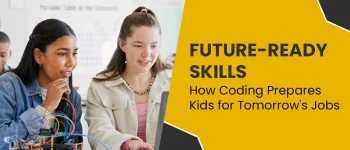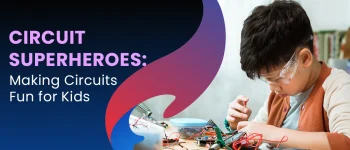
Micro:bit is a small programmable device designed to empower children with basic coding knowledge. It is a pocket-sized computer that can be used to create games, animations, and even control other devices. The device is equipped with an LED screen, buttons, and sensors that allow children to interact with it. It is easy to use and can be programmed through various platforms, making it accessible to kids of all ages. Micro:bit encourages problem-solving skills, creativity, and logical thinking in children, while also introducing them to the world of technology and coding..
Have you ever heard of micro:bit? micro:bit, also known as BBC Micro Bit, is a small computer that can fit in your pocket and be used to create various digital projects. The best part is that you can program, customize, and control your micro:bit from anywhere!
What’s incredible is that more than 25 million young people from over 60 countries have already benefited from learning with the micro:bit. It’s not just for children, though, as it is ideal for teachers who are starting out or want to explore physical computing further.
So, what exactly is micro:bit? It’s a tiny computer, only a few centimeters in size, but don’t underestimate its power. It is designed to inspire every child to create their digital future. Developed as part of the BBC’s Make It Digital campaign in 2014, the micro:bit received support from 29 partners to bring it to life.
With micro:bit, the possibilities are endless. You can make games, robots, wearable devices, and more. It combines software and hardware to create projects with an LED display, buttons, sensors, and input/output functionalities.
Using micro:bit is easy, even for beginners. You can create projects using programming languages like MakeCode, Python, and Scratch, which are intuitive and designed to help you learn and have fun. You don’t need years of coding experience to start creating projects with micro:bit.
To get started with micro:bit, you’ll need a few things like the micro:bit itself, a battery pack, a USB cable, and a computer or phone with internet access. Once you have everything set up, you can start programming your micro:bit using Blockly, a visual language, or Python, a text-based language.
There are endless possibilities for programs you can create with micro:bit. You can make games like “Rock, Paper, Scissors” or “Guess the Number,” create a weather station using the temperature and light sensors, make a step counter using the motion sensor, or even build a robot that moves around and performs tasks.
If you’re curious and ready to explore technology, micro:bit is a fantastic tool for creating all kinds of projects. It’s a fun and powerful little computer that sparks imagination and creativity. At Moonpreneur, we understand the need to educate and ignite entrepreneurship in our kids, which is why we offer online STEM programs focusing on robotics, game development, app development, advanced math, and more. Register for a free 60-minute Robotics and Coding Workshop today and start your micro:bit journey!
Source: moonpreneur.com
Hashtags: #microbit #Kids








 24hMinecraft is a Minecraft community created by fans, where users can share and download their favorite shader packs, mods, maps, texture packs, or expand their knowledge with our guides.
24hMinecraft is a Minecraft community created by fans, where users can share and download their favorite shader packs, mods, maps, texture packs, or expand their knowledge with our guides.
Leave a Reply